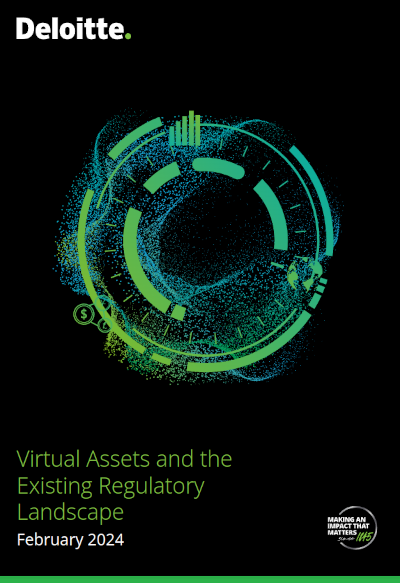Introduction
In the dynamic realm of virtual assets, the Middle East is emerging as a key player in shaping the regulatory landscape.
Deloitte’s comprehensive report “Virtual Assets and the Existing Regulatory Landscape” sheds light on the evolving regulatory frameworks and initiatives within the region. Let’s delve into the key elements of this report, exploring each chapter to gain a deeper understanding of the virtual assets regulatory landscape in the Middle East.
Evolution of Digital Assets in the Middle East
The evolution of digital assets in the Middle East, particularly in the United Arab Emirates, Bahrain, Saudi Arabia, and Qatar, is marked by the establishment of comprehensive regulatory frameworks and initiatives to promote the adoption of virtual assets. In the UAE, the Virtual Assets Regulatory Authority (VARA) was founded in March 2022 as the world’s first independent regulator for virtual assets. VARA has developed various regulations and handbooks for virtual asset service providers, covering key areas in the digital assets space.
Furthermore, the UAE launched the “UAE Digital Economy Strategy” in April 2022 with the goal of doubling the domestic digital economy’s contribution to the GDP within a decade. In Bahrain, the Central Bank has implemented stringent regulations governing crypto-asset services through a regulatory sandbox, allowing entities to innovate in a controlled environment.
Saudi Arabia’s collaboration with the Hong Kong Monetary Authority aims to enhance financial services integration, focusing on tokenization and payments infrastructure agreements. Qatar’s Central Bank recognizes the potential of Distributed Ledger Technology (DLT) in its FinTech strategy, aligning with the country’s National Vision 2030. Initiatives such as the National Blockchain Blueprint and the development of a digital assets regime demonstrate Qatar’s commitment to embracing digital assets and fostering regulatory frameworks in consultation with industry experts.
Regulators of Digital Asset Service Providers
Regulators of digital asset service providers play a crucial role in overseeing crypto-asset activities and markets by supervising the activities of issuers and service providers. They are responsible for establishing a comprehensive governance framework that includes clear lines of responsibility and accountability for the functions and activities conducted by these entities. Effective risk management is essential, and authorities must ensure that crypto-asset service providers have robust frameworks in place to address all material risks associated with their activities.
Furthermore, regulators should require crypto-asset issuers and service providers to disclose transparent information about their operations, risk profiles, financial conditions, products, and activities to users and stakeholders. It is important to identify and address financial stability risks that may arise from interconnections and interdependencies within the crypto-asset ecosystem and the broader financial system. Authorities should also supervise multiple functions of crypto-asset service providers and ensure that they are subject to comprehensive regulation, supervision, and oversight to mitigate risks associated with individual functions and their combinations.
To effectively regulate the digital asset space, authorities need adequate regulatory powers, tools, and resources. They should regulate and supervise crypto-asset activities, issuers, and service providers in proportion to the financial stability risks they pose. Cooperation and communication, both domestically and internationally, are essential to promote consistency in regulation and supervision across jurisdictions. Additionally, authorities should mandate that crypto-asset issuers and service providers maintain robust frameworks for data collection, recording, and reporting, granting access to data as needed to ensure transparency and accountability in the digital asset ecosystem.
Conclusion
In conclusion, the report provides a comprehensive overview of the virtual assets regulatory landscape in the Middle East, showcasing the region’s commitment to fostering innovation while ensuring regulatory compliance.
By exploring the key elements of each chapter, we gain valuable insights into the evolving dynamics of the virtual assets ecosystem in the Middle East. As the region continues to embrace digital transformation, regulatory frameworks play a pivotal role in shaping the future of virtual assets.

Leave a Reply